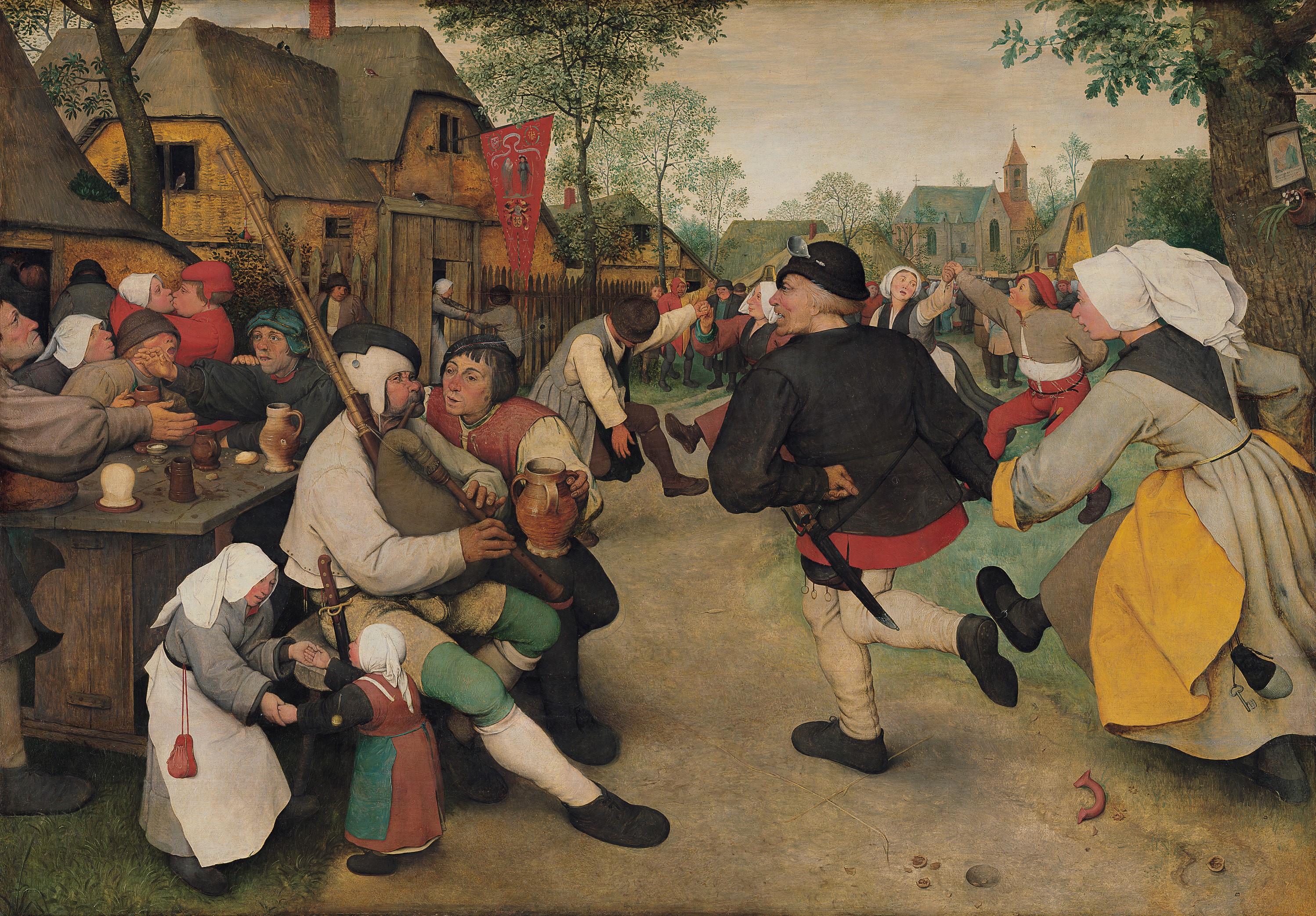It's true that cameras weren't going to be invented until the mid-1800s. But the 1500's did mark a period during which some artists started to take a different approach toward depicting people.
In the 1400's, most people who were having their portraits painted looked as if they had just come straight from the taxidermist.
Of course, this didn't apply to all 15th-century portraits,
especially if they were painted by Albrecht Durer.
But, let's face it, a lot of other 15th-century portraits looked positively posthumous.
But then we arrive at the 16th century. Check out this El Greco portrait.
To me, this woman looks ready to swoosh off the page and into the room. Or how about this one, a self-portrait by Artemisia Gentileschi?
I can hear the lute music, can't you? Or this guy, by Andrea del Sarto:
He's looking at me with extremely mixed feelings, as if to say: who are you and what exactly are you doing here?
But it wasn't just portraiture that changed. Pieter Bruegel the Elder (1525-1569) came up with the revolutionary idea of not just painting wealthy patrons and religious subjects, but actually painting peasants as they went about their daily business. He would dress as a peasant himself so he could travel incognito and mingle among his hoped-for subjects, and some of his results were the equivalent of candid snapshots of a social class and a lifestyle which other middle or upper class Europeans believed weren't worthy of observation.
Children's Games (1560)
The Peasant Wedding (1567)
Click! Unlike those 15th-century nobles who spent fortunes getting their portraits painted, only to come out looking like waxworks, these peasants still live and breathe over 500 years later.










What Bruegel did must have sounded like sacrilege to his contemporaries! Or maybe not. Europe was seething with revolutionary ideas just then wasn't it? Painting peasants might have been thought to be tame by comparison.
ReplyDeleteInstagram is a brilliant title for this post :)
Nila, I think that revolutionary fervor went only so far. The idea of social equality was not on many people's radar!
DeleteAmazing isn't it. Good portrait artists have off the charts talent.
ReplyDeleteAmazing is the word, all right! One look into the subject's eyes, and 500 years melt away instantly.
DeleteI love looking at these portraits and paintings, and always gravitate toward them when I'm in an art museum. The peasants seem to be having a lot more fun!
ReplyDeleteSo do I, Pam. I can't help it. They're LOOKING at us!!! Always makes me cry.
DeleteI guess as a species, we're obsessed with taking pictures of ourselves and those around us.
ReplyDelete~Ninja Minion Patricia Lynne aka Patricia Josephine~
Story Dam
Patricia Lynne, Indie Author
It's been that way for at least 40,000 years, as we know from ancient cave paintings.
DeleteI love El Greco's painting, especially compared to the ones that just preceded it. Artists always amaze me, it's fascinating how they can breathe life into something that's just made of lines and color.
ReplyDeleteIt's not just lines and color. It's magic.
DeleteWe are very lucky there were artists who parsued this path. Their paintings allow us to time-travel back in time :-)
ReplyDelete@JazzFeathers
The Old Shelter - Jazz Age Jazz
Exactly! Historians make use of Bruegel's paintings because there are no other sources for some of the information he brings us.
DeleteGreat post. Like Pam said, it is great to look at these types of portraits in museums and art galleries.
ReplyDeletegreat selection of the portraits, aptly commented too, thanks for the effort you put in
ReplyDeleteThese wonderful portraits offer so much more than a photograph ever can. Delightful.
ReplyDeleteKeith's Ramblings: a story with 4 neglected J words!